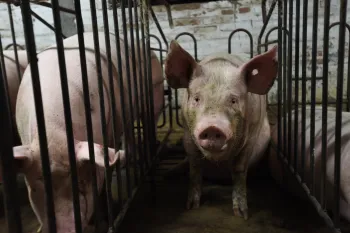Shark Finning Regulations
Existing regulations The first multi-lateral organization to address the issue of shark finning was the UN Food and Agriculture Organization which, in 1999, produced its International Plan of Action for Sharks, recommending the full utilization of sharks. Since then, the UN General
Factory Egg Farms in Mexico
At odds with the country's tradition of small, independent, rural farms, the majority of Mexico's commercial eggs, meat, and dairy products now come from large intensive confinement facilities. These operations, known as animal factories (or factory farms), fail to provide for many
Campaign Against Factory Farming in India
HSI's Factory Farming Campaign in India seeks to raise awareness about the conditions under which animals in India are reared, and to empower both activists and every-day consumers to live more compassionate and sustainable lives. The vast majority of commercial egg and
Swim-with-the-Dolphins Attractions in the Caribbean and Elsewhere
In 2004, The HSUS published a web article that examined the current global situation regarding the growth of dolphinariums and swim-with-the-dolphins (SWTD) attractions. At that time, we knew of at least 14 operational SWTD exhibits in the Caribbean, with seven or eight
Agreement on the International Dolphin Conservation Program (AIDCP)
The Agreement on the International Dolphin Conservation Program (AIDCP) is a legally binding, multilateral agreement that entered into force in February 1999. The Inter-American Tropical Tuna Commission (IATTC) implements and provides the Secretariat for the program. This agreement was established, in part

Gestation Crates
Pigs are intelligent, highly social animals, yet many sows (female pigs) around the world are treated as piglet-producing units at factory farms that use intensive confinement systems. These sows suffer through rapid cycles of impregnation, giving birth, and nursing. During their four-month
Ivory trade and CITES
Elephants in Africa are being slaughtered on an unprecedented scale. In 2012, more than 35,000 of them—or close to 100 per day—were killed for their tusks. Things turned particularly ugly in 2013, when more than 300 fell victim to cyanide poisoning by

Sharks: Dying for a Bowl of Soup
Every year, millions of sharks suffer painful deaths from the cruel and wasteful shark fin trade. Whether unintended "bycatch" by or caught specifically for their valuable fins, these animals have their fins removed and then—either dead or dying—are immediately cast back into
Sharks on the Shelf: Shark Products
Sharks are killed for many reasons: for sport, as targets of intensive commercial fisheries, and as accidental bycatch of fisheries that target other large fish such as swordfish and tuna. A variety of species of rays, which are related to sharks, are
